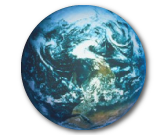We at ERA Science are dedicated to promoting environmental research and technology, most of which will prevent or lessen long-term climate change and its negative impacts on the earth. The apparent increase in natural disasters in the past few years, however, such as hurricanes Katrina, Sandy and Typhoon Haiyan in the Philippines, also concerns us about the more short-term effects of human-driven climate change; what sort of changes can we expect in the near future, and what can we do about them?
The National Academy of Sciences’ 200-page report released this week adds to a slew of scientific studies on climate change emerging in the past few months. Yet, rather than imploring humans to reduce carbon emissions and slow down the changing climate, this report focuses on potential calamities that could occur in the near future.
In an attempt to safeguard the earth and the species that inhabit it, scientists concluded in the report that as the risk of natural disaster rises, we ought to better prepare ourselves by setting up more effective monitoring systems.
The study warns of “tipping points” in the earth’s climate beyond which “major and rapid changes occur”, specifically pointing to amplified melting ice sheets in the Arctic over the past seven years, and the displacement and extinction of species due to changing habitats.
As the report notes, these “abrupt” changes are occurring on a scale of years, not centuries, and are thus more imminent and difficult to track: “when you think about gradual changes, you can kind of see where the road is and know where you’re going,” says Anthony Barnosky, professor of integrated biology at UC Berkley. “When you think of abrupt changes and threshold effects, the road suddenly drops out from under you, and it’s those kind of things that we are suggesting we need to anticipate in a much more comprehensive way.”
So, while there is most likely nothing we can do to stop the more immediate environmental and biological change that will occur in the coming years, there are ways to avoid the down-stream effects of this damage on ourselves and the species with whom we share the earth. Some of the report’s recommendations include closer monitoring of ice sheets in Antarctica and Greenland, as well as more strategic ocean temperature measurement locations.

